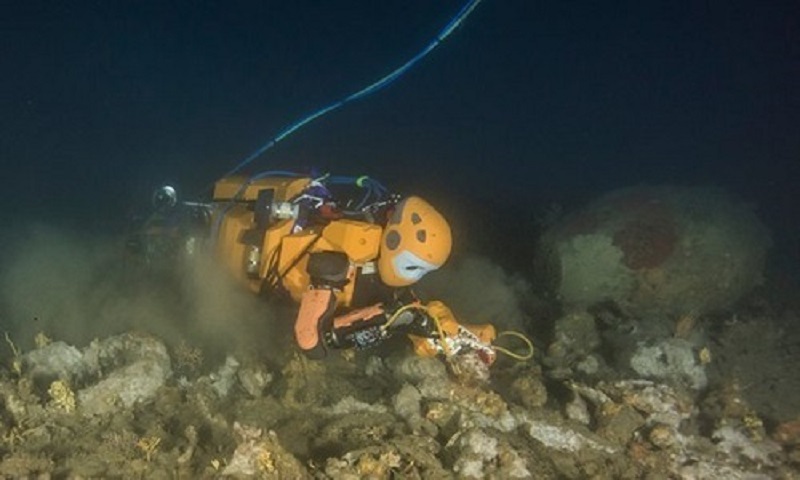The mermaid robot can dive to depths that humans cannot reach to search for treasures trapped in the wreck of French King Louis XIV’s navigation ship.

Mermaid robot OceanOne searches for treasure on the shipwreck of King Louis XIV. Photo: Teddy Seguin.
According to the Guardian, in mid-April 2016, robotics researchers at Stanford University, USA, successfully sent a mermaid robot down to a shipwreck to collect a precious vase the size of a bunch of grapes. In 1664, King Louis XIV’s guide ship La Lune sank in the waters 32 km south of Toulon, France. Since then, the wreck has remained at a depth of 100 m.
Previously, the OceanOne mermaid robot was put to test through virtual reality technology. Oussama Khatib, a professor of computer science at Stanford University, is the person who directly controls the robot. Khatib said combining human skills with the sturdy structure of mermaid robots will transform undersea exploration.
“Humans can equip robots with intuition, expertise and cognitive abilities. Robots can operate in environments that are dangerous to humans,” Khatib shared. Divers searching for shipwrecks and deep-sea creatures often have difficulty with oxygen supply and water pressure. The success of this test shows that OceanOne can extend underwater explorations for longer periods of time, at greater depths.
The original purpose of the OceanOne engineering team was to study coral reefs deep under the Red Sea. The Stanford University project aims to combine human skill with the ruggedness of autonomous submarines.
OceanOne robot has a very human-like shape. It has human-like vision thanks to two forward-facing cameras. Its wrist has movable joints connected to force sensors. These sensors act directly on Khatib’s hands through a process called sensory feedback. Thanks to that, the operator can feel the object that the robot is holding. Khatib said that in the future, the robot will be added with tactile sensors.


